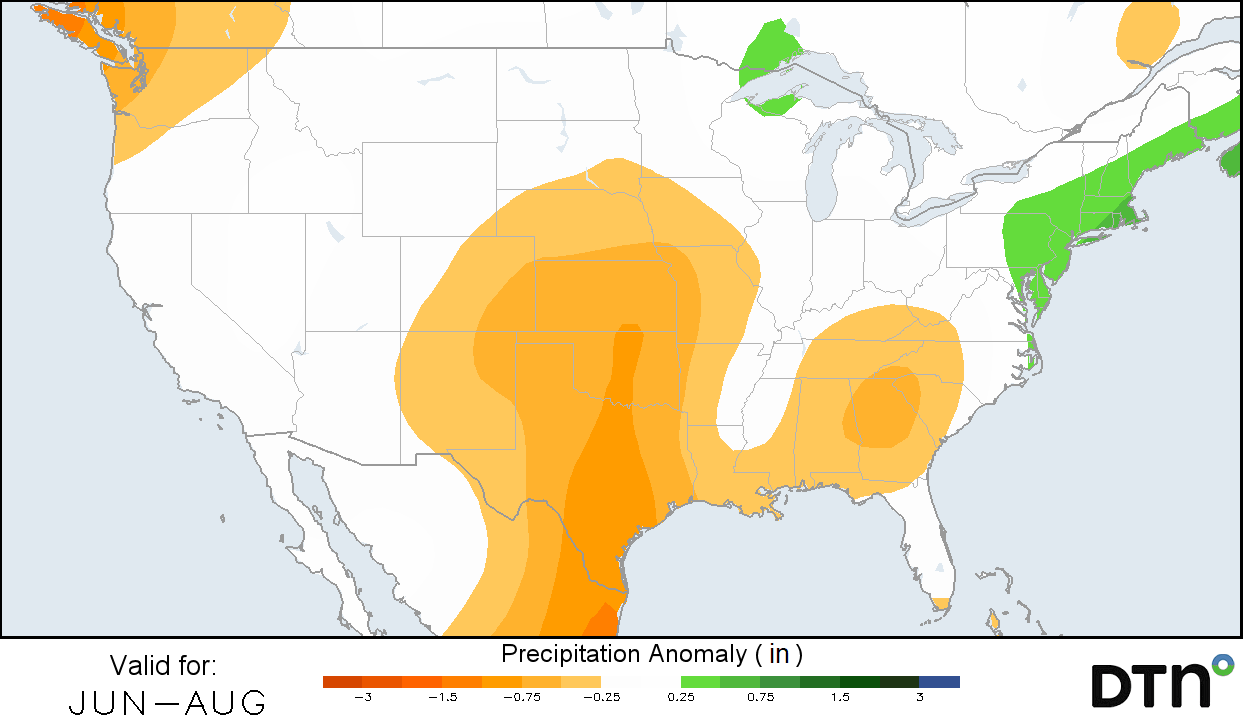Corn Belt Weather Outlook for Spring Planting

The good news for western Corn Belt farmers is that climate models are not in unison predicting hot and dry weather in 2023 like last year. Instead, current precipitation patterns should trend more normally across the Midwest while helping reduce some western drought areas.
“This year is shaping up to be more of what I would call a normal summer,” says DTN meteorologist John Baranick. “It doesn’t mean everyone gets normal precipitation and temperatures, but we will see plenty of large complexes of thunderstorms moving across the Corn Belt.”
There will always be variability of wet and dry spots following La Nina as it exits this spring and turns into a neutral state during summer. However, Baranick doesn’t see moisture causing any huge overall corn yield impacts. The exception might be in areas that miss snowpack and show unfavorable spring rain patterns, like Kansas into southwest Iowa, northeast Nebraska and northwest Missouri. “But up through the Dakotas, Minnesota, Wisconsin, Illinois and eastward, I think we’re in good shape for adequate moisture headed into planting,” he says.
If you compare historical weather patterns to the current La Nina triple-dip (three consecutive years), such an event has occurred three times since 1950. In this linked article, DTN ag meteorologist emeritus Bryce Anderson concluded that based on these previous triple-dips, a good corn production season will likely occur without widespread problems.
La Nina is still in control for the next few months before it slowly goes away during the time it takes for the ocean temperatures to even out. The above-normal snowpack levels this winter in the northwestern Corn Belt should help soil moisture levels given a gradual spring warm up.
“The only issue that current models show is the potential for delayed planting due to coolness,” Baranick says. “La Nina tends to favor these clipper systems that roll through in the spring with a cold backside to them—especially across the northern plains and the Canadian prairies.”
When comparing the analog weather years with current models, DTN forecasts colder than normal weather into May in the northwestern Corn Belt that could significantly delay planting. “A delayed snowpack release could push planting back, perhaps similar to what happened in North Dakota last year when a huge April snowstorm combined with a cold May caused major delays,” Baranick says.
It’s still too early to accurately predict summer temperatures due to the climate model spring predictability barrier. Usually, a waning La Nina into a neutral pattern either produces a hot or cold summer without much in-between. “Current models are biased toward being too warm but not blazing hot,” he says. “I can’t say with any certainty, at least until we get past March or April, that we’re going to have a hot summer anywhere...or a cold one, for that matter, but it will likely be one or the other,” Baranick says.
The confidence level is much higher regarding the precipitation forecast. “We see the precipitation pattern producing bouts of thunderstorms at a regular clip, passing through entire regions, not just one area over another,” he says. “Rather than La Nina or El Nino driving the weather pattern this summer, we see the Madden-Julien Oscillation (MJO) having a larger impact on Midwest weather to push consistent storms across most of the Corn Belt.”

Baranick says there will be winners and losers from these storms. The current DTN forecast model suggests that the southern Corn Belt, Kansas and Missouri have a greater chance of dryness than other areas of the Midwest. “The only thing about this year, as opposed to the last two years under a La Nina influence, is we really can’t make a good determination yet of where those thunderstorms may be and where they will miss,” he adds.
In this podcast episode, DTN/Progressive Farmer Broadcaster Ken Root talks with Corteva Agriscience Market Development Specialist Jason Gibson about what the spring forecast holds - and how corn and soybean farmers can plan for successful weed control, no matter what the weather brings.
Content provided by DTN/The Progressive Farmer
Find expert insights on agronomics, crop protection, farm operations and more.